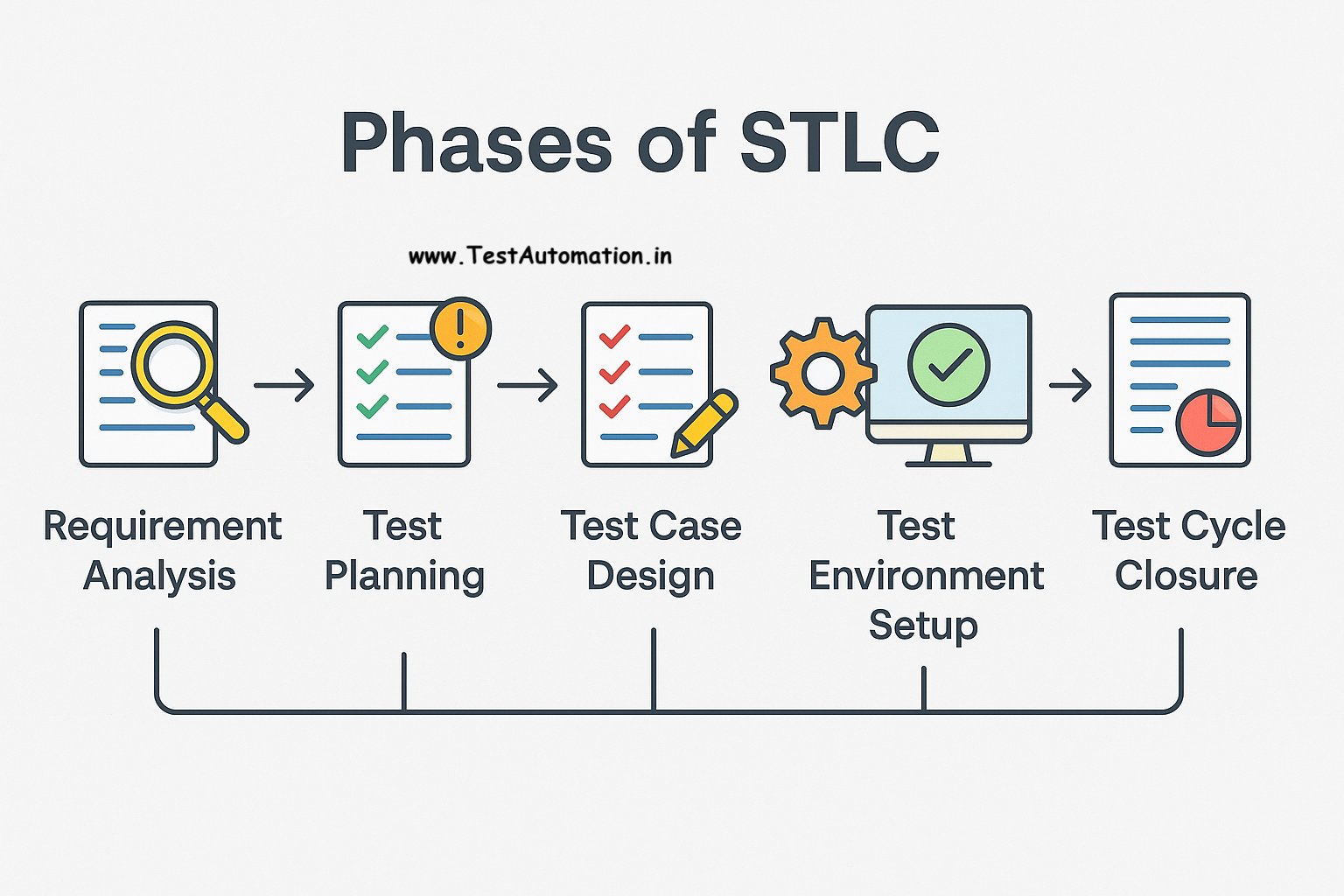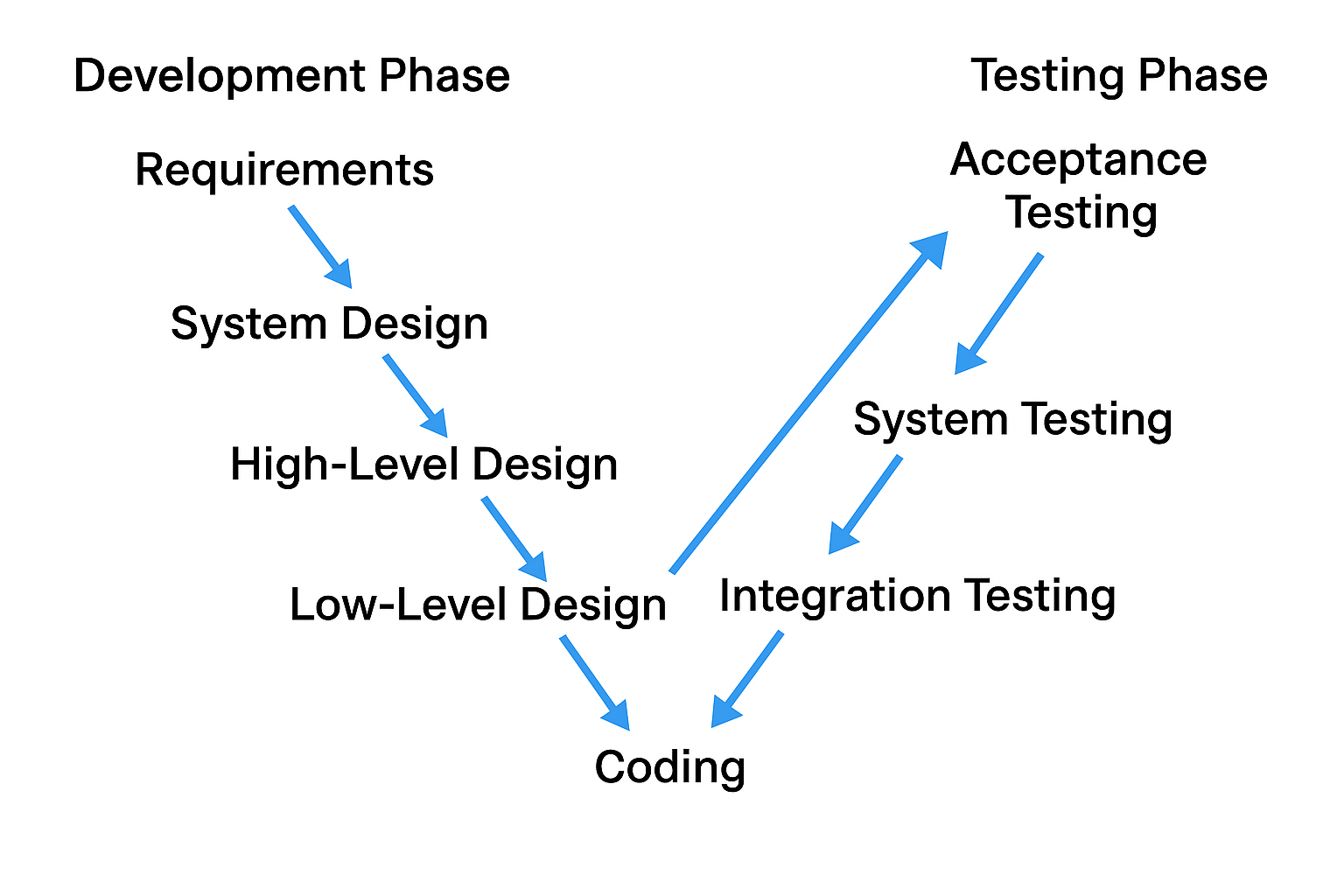So now we have to learn and understand the Entry and Exit Criteria for STLC each phase of the Software Testing Life Cycle (STLC). Let’s understand Why the entry and exit criteria is important for each phase of Software Testing Life Cycle (STLC). As we learned in our earlier chapter about STLC phases, each phase is started once the earlier phase gets completed. Hence, to ensure that the earlier phase is completed and we are ready to move or start the next phase, we have to check and ensure the entry and exit criteria.
1. Requirement Analysis Phase
This is the phase where software requirements are gathered.
Entry Criteria:
- The software requirements (Business Requirements or Software Requirement Specification – SRS) document is available.
- Stakeholders or the business team have shared all necessary clarification documents.
- Access to required tools (like requirement management tools, project management tools) is provided.
- The test manager/test lead is identified.
Exit Criteria:
- The QA team has fully understood the requirements.
- Ambiguities and unclear requirements have been discussed and resolved.
- Requirement Traceability Matrix (RTM) creation is initiated.
- Review of requirements from a testability point of view is completed.
Note: This phase is crucial because the quality of understanding here impacts the effectiveness of all future phases.
2. Test Planning Phase
This is the phase where a plan is made for how to develop the software (timeline, cost, resources).
Entry Criteria:
- Requirement analysis is complete and well understood by the QA team.
- Test estimation inputs (like complexity, risk, timeline, resource availability) are gathered.
- Test tools and infrastructure requirements are identified.
Exit Criteria:
- Test Plan document is created, reviewed, and signed off.
- Test effort estimation is finalized.
- Resource allocation and scheduling are completed.
- Risk analysis and mitigation strategies are documented.
- Test strategy and communication plans are ready.
Note: This phase provides the roadmap for the entire testing process, defining “how” testing will be done.
3. Test Case Design / Development Phase
This is the phase where you create a blueprint of the software as well as test cases are designedd. (how it will look, how it will work internally).
Entry Criteria:
- The approved and signed-off test plan is available.
- Requirements are frozen (no further changes expected).
- RTM is ready for mapping test cases.
- Test scenarios have been identified.
Exit Criteria:
- All test cases are written and reviewed.
- Test cases are mapped to requirements in the RTM.
- Test data is identified and created.
- Automation scripts (if applicable) are developed for selected test cases.
- Test case reviews and approvals are completed.
Note: This is the phase where testers create detailed instructions (test cases) to verify the system’s behavior.
4. Test Environment Setup Phase
Entry Criteria:
- Test cases are ready.
- Hardware and software requirements are identified.
- Dependencies with other teams (like DevOps, infrastructure) are clarified.
Exit Criteria:
- Required Test environment is installed, configured, and validated.
- Test data is loaded.
- Access is provided to all QA team members.
- Smoke testing is conducted to ensure the environment is stable.
- Sign-off is obtained for test environment readiness.
Note: A properly configured and stable test environment ensures tests run smoothly and reflect real-world conditions.
5. Test Execution Phase
Entry Criteria:
- Test environment is ready and validated.
- Approved test cases and test data are available.
- All tools required (like test management tools, defect tracking tools) are configured.
Exit Criteria:
- All test cases are executed.
- Actual results are recorded and compared with expected results.
- All defects are logged in the defect tracking system.
- Passed and failed test cases are updated.
- Test execution reports are shared.
- Regression testing and re-testing are completed.
Note: This phase involves running the test cases and identifying issues in the application.
6. Defect Reporting & Tracking
Entry Criteria:
- Test execution has started.
- A defect management tool (e.g., JIRA, Bugzilla) is in place.
- Testers are trained to report defects in a standard format.
Exit Criteria:
- All identified defects are logged and assigned severity/priority.
- Development team has fixed reported bugs.
- Testers have verified and closed the fixed defects.
- All critical bugs are resolved or deferred as per business decision.
- Defect reports and metrics are generated.
Note: Effective defect tracking ensures that problems are addressed and the product quality improves.
7. Test Cycle Closure Phase
Entry Criteria:
- Test execution is complete.
- All planned test cycles are done.
- Defects are closed or documented.
Exit Criteria:
- Test summary report is created.
- Lessons learned and best practices are documented.
- Test metrics and KPIs are reported.
- Knowledge base is updated.
- Final sign-off is obtained from stakeholders.
Note: This phase helps wrap up the testing activity in a structured way and prepares the team for future projects.
Conclusion
Entry and Exit Criteria in STLC provide a clear boundary between each phase, ensuring readiness before moving forward. They serve as quality gates that help teams assess progress, measure quality, and manage risks. By enforcing these criteria, the QA process becomes more predictable, measurable, and effective.



